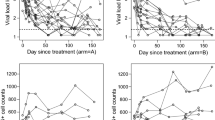Abstract
Time-to-event data are often subject to left-truncation. Lack of consideration of the sampling condition will introduce bias and loss in efficiency of the estimation. While auxiliary information from the same or similar cohorts may be available, challenges arise due to the practical issue of accessibility of individual-level data and taking account of various sampling conditions for different cohorts. In this paper, we introduce a likelihood-based method to incorporate information from auxiliary data to eliminate the left-truncation problem and improve efficiency. A one-step Monte-Carlo Expectation-Maximization algorithm is developed to calculate an augmented likelihood through creating pseudo-data sets which extend the form and conditions of the observed sample. The method is illustrated by both a real dataset and simulation studies.







Similar content being viewed by others
References
Asgharian M, M’Lan CE, Wolfson DB (2002) Length-biased sampling with right censoring: an unconditional approach. J Am Stat Assoc 97(457):201–209
Butler SM, Snowdon DA (1996) Trends in mortality in older women: findings from the Nun Study. J Gerontol Ser B Psychol Sci Soc Sci 51(4):S201–S208
Faucett CL, Schenker N, Taylor JM (2002) Survival analysis using auxiliary variables via multiple imputation, with application to AIDS clinical trial data. Biometrics 58(1):37–47
Higuchi M, Chen R, Abbott RD, Bell C, Launer L, Ross GW, Petrovitch H, Masaki K (2015) Mid-life proteinuria and late-life cognitive function and dementia in elderly men: the Honolulu-Asia Aging Study. Alzheimer Dis Assoc Disord 29(3):200–205
Huh JY, Ross GW, Chen R, Abbott RD, Bell C, Willcox B, Launer L, Petrovitch H, Kaya B, Masaki K (2015) Total and differential white blood cell counts in late life predict 8-year incident stroke: the Honolulu Heart Program. J Am Geriatr Soc 63(3):439–446
Jiwani SL (2005) Parametric changepoint survival model with application to coronary artery bypass graft surgery data. Master’s thesis, Department of Statistics and Actuarial Science-Simon Fraser University
Kalbfleisch J, Lawless J (1991) Regression models for right truncated data with applications to AIDS incubation times and reporting lags. Stat Sin 1(1):19–32
Keiding N, Moeschberger M (1992) Independent delayed entry. Survival analysis: State of the art. Springer, Berlin, pp 309–326
Li G, Qin J (1998) Semiparametric likelihood-based inference for biased and truncated data when the total sample size is known. J R Stat Soc Ser B (Stat Methodol) 60(1):243–254
Louis TA (1982) Finding the observed information matrix when using the EM algorithm. J R Stat Soc Ser B (Methodol) 44(2):226–233
National Vital Statistics Reports (2017) Retrieved from the Centers for Disease Control and Prevention website https://www.cdc.gov/nchs/products/nvsr.htm
Qin J, Ning J, Liu H, Shen Y (2011) Maximum likelihood estimations and EM algorithms with length-biased data. J Am Stat Assoc 106(496):1434–1449
Qin J, Shen Y (2010) Statistical methods for analyzing right-censored length-biased data under Cox model. Biometrics 66(2):382–392
Shen P-S (2014) Nonparametric estimation with left-truncated and right-censored data when the sample size before truncation is known. Statistics 48(2):315–326
Snowdon DA (2003) Healthy aging and dementia: findings from the Nun Study. Ann Intern Med 139(5 Pt 2):450–454
Tsai W-Y, Jewell NP, Wang M-C (1987) A note on the product-limit estimator under right censoring and left truncation. Biometrika 74(4):883–886
United States National Intercensal Tables (1900–1990) Retrieved from the United States Census Bureau website https://www.census.gov/data/tables/time-series/demo/popest/pre-1980-national.html
Vardi Y (1989) Multiplicative censoring, renewal processes, deconvolution and decreasing density: nonparametric estimation. Biometrika 76(4):751–761
Wang M-C (1987) Product limit estimates: a generalized maximum likelihood study. Commun Stat Theory Methods 16(11):3117–3132
Wang M-C (1991) Nonparametric estimation from cross-sectional survival data. J Am Stat Assoc 86(413):130–143
Wang M-C (1996) Hazards regression analysis for length-biased data. Biometrika 83(2):343–354
Wang M-C, Brookmeyer R, Jewell NP (1993) Statistical models for prevalent cohort data. Biometrics 49(1):1–11
Wang M-C, Jewell NP, Tsai W-Y (1986) Asymptotic properties of the product limit estimate under random truncation. Ann Stat 14(4):1597–1605
Acknowledgements
This work was supported by the Natural Science and Engineering Research Council of Canada through grants RGPIN 115928 (Dr. Leilei Zeng) and RGPIN 03688-2016 (Dr. Mary E. Thompson).
Funding
This work is part of Yidan Shi’s PhD thesis co-supervised by Dr. Leilei Zeng and Dr. Mary E. Thompson. Dr. Suzanne L. Tyas contributed to the idea of utilizing auxiliary survival information from the Nun Study - Mortality Study to enhance the efficiency of the estimation. She also provided valuable feedback on the manuscript and gave the permission to use the data from the Nun Study - Aging study.
Author information
Authors and Affiliations
Corresponding author
Ethics declarations
Conflict of interest
The authors declare that they have no conflict of interest.
Additional information
Publisher's Note
Springer Nature remains neutral with regard to jurisdictional claims in published maps and institutional affiliations.
Rights and permissions
About this article
Cite this article
Shi, Y., Zeng, L., Thompson, M.E. et al. Augmented likelihood for incorporating auxiliary information into left-truncated data. Lifetime Data Anal 27, 460–480 (2021). https://doi.org/10.1007/s10985-021-09524-6
Received:
Accepted:
Published:
Issue Date:
DOI: https://doi.org/10.1007/s10985-021-09524-6




